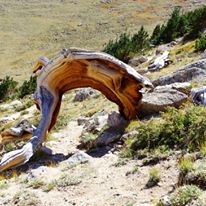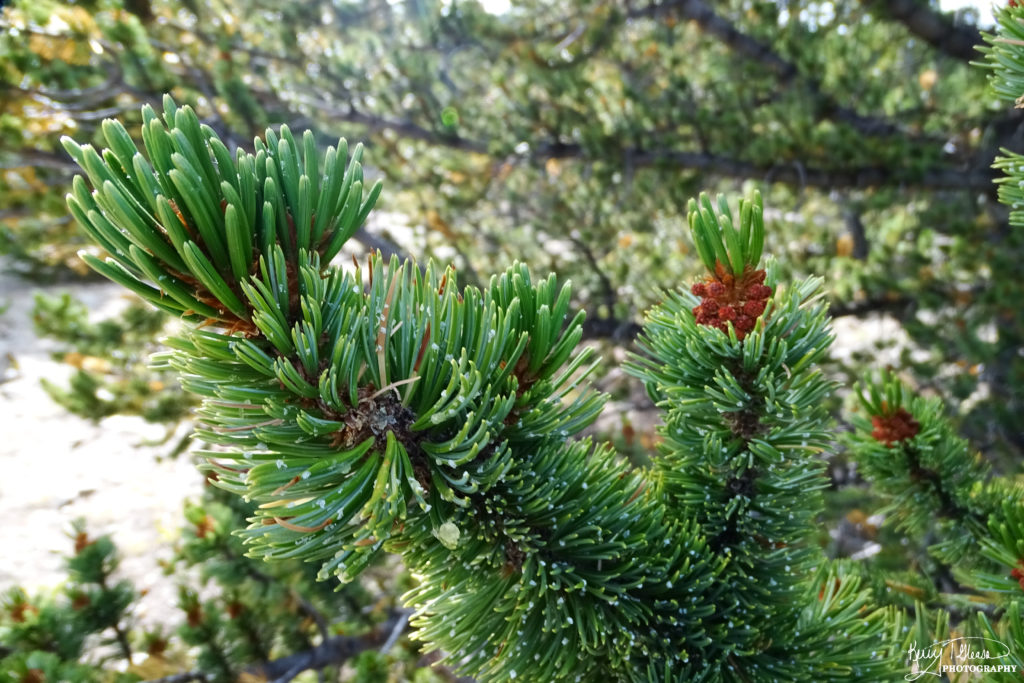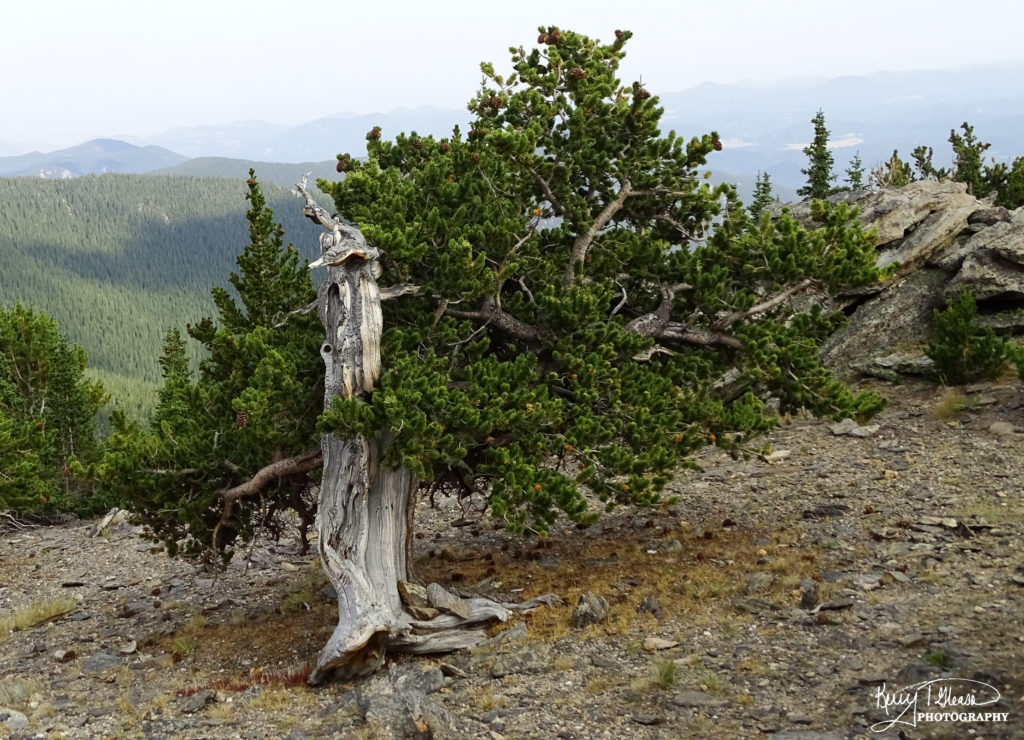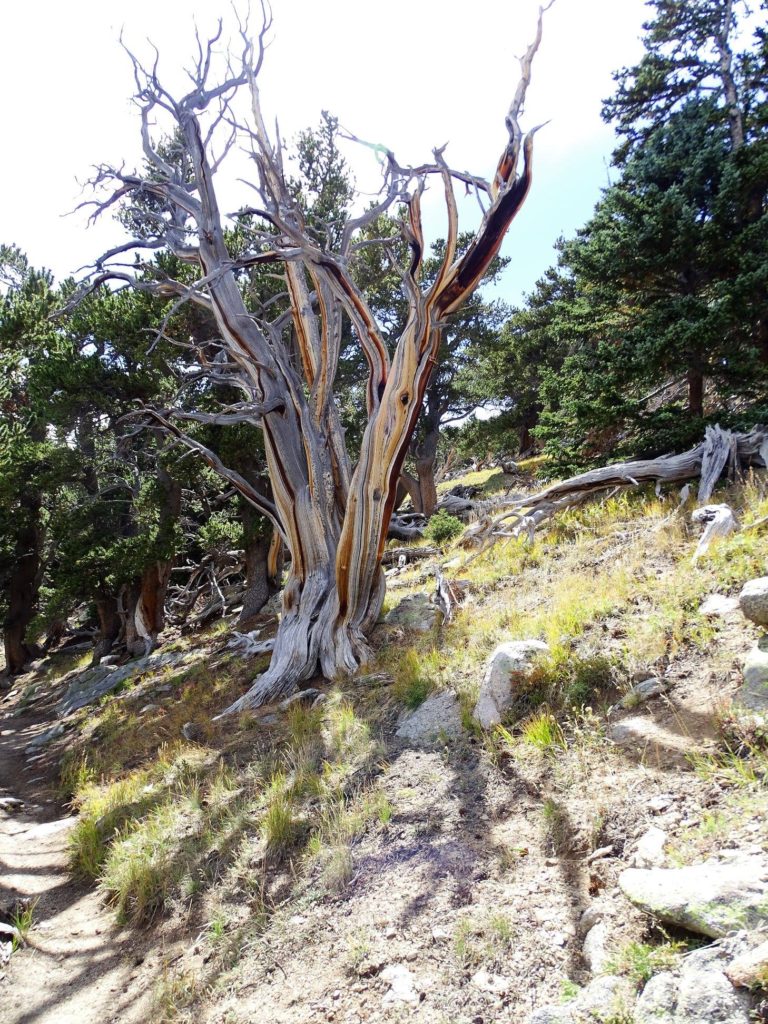
A bristlecone pine, tortured by years of gusting winds and poor soil, bends but does not break.
A Walk Through An American Ancient Arbor
Imagine taking a walk with living beings that were here in the time of Lincoln, or even George Washington and the American Revolution. They might have been here in Colorado, unaffected by the arrival of Columbus, or even Leif Ericson before that.
One reason hiking in Colorado is exciting is that something unexpected might smack you in the face. I arbitrarily decided to hike the Chief Mountain Trail along Squaw Pass Road. The out-and-back trail is 3.1 miles to the summit with an elevation gain of about 1,100 feet. The summit is not close to being one of Colorado’s highest, but at 11,607 feet above sea level on the eastern edge of the Front Range, it offers spectacular views of other Rocky Mountain peaks. In the wake of the Cameron Peak fire to the north and other climate-related wildfires in the West, visibility for distant mountains was limited. It was still inspiring.

From the trailhead, rocks and roots partner to create footholds and steps, allowing hikers to ascend into the alpine forest. Fir and spruce trees shade the rocky path early into the journey. By September, the wildflowers are no longer in bloom. Moss fills the spaces between the trees, eventually giving way to lichen-covered rocks.
I wasn’t expecting to have the trail almost all to myself on a Tuesday afternoon and I certainly wasn’t expecting to go back in time hundreds, if not thousands of years. As I neared the summit, I recognized Rocky Mountain bristlecone pine trees (Pinus Aristata), brethren of the oldest living creatures on Earth, the Great Basin bristlecones of Nevada, Utah and California. Nevada is home to the Methuselah tree, estimated to be more than 4,800 years old.
The oldest of Colorado’s bristlecone pines may be about half that. They emerged in the days before the pyramids were built half a globe away, before Julius Caesar and before Christ, as long as 2,500 years ago. They survive in harsh alpine and sub-alpine terrains, where winds sculpt the rock faces and blow the nutrient-depleted soil from the top of the mountain. Those same winds create the twisted and tortured trunks of our plant kingdom’s greatest survivor.
These ancient arbors aren’t in a hurry to grow old, or tall or wide. Their trunks might add one inch to their girth in 100 years. A mature tree that is five- or six-foot tall might be 300 years old, or more. Their cones develop a prickly surface and take two years or more to fully develop. Female cones start out purple in color, and when they finally open, the tiny seeds have a wing that carries them far enough from the parent tree so it won’t compete for sparse nutrients and water. The bark is thin, and if it comes under attack by insects, beetles or birds, the needles emit a foul-smelling resin that repels the attack. Bristlecones will continue to grow even if 90 percent of their bark is stripped or root system is damaged. Through floods and fires, the bristlecones persist.
I find the bristlecone forests inspiring and relative to the human condition. It doesn’t matter where they grow up, or the resources they have. They fight back when attacked. They survive storms, fires, floods and any calamity nature throws at them. We may not live hundreds or thousands of years but we can take lessons from bristlecone pines to overcome adversity and thrive.







Awesome perspective, Kerry! And I love the photos, especially that last one!
Enjoyed reading your commentary and seeing the specticular pictures which made for an interesting insight to your story. We must always preserve these treasures of nature🌲
Thank you Kerry.